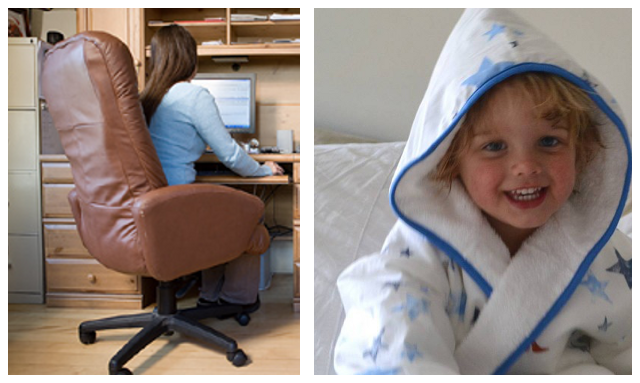

12pm: Take an hour off, enjoying a relaxed lunch while reading your favorite book.
1pm: Log back in to continue therapy. See five students, from two out-of-state schools where there is a distinct therapist shortage and students were not previously receiving any therapy services. By car, these schools would be a 10 and 13-hour drive.
3:30pm: Finalize session reports, using the notes and statistics automatically created through TinyEYE’s online tracking system and the jot notes that you took during the session. Plan for tomorrow’s sessions, reflecting on the tools that both you and your students have in your ‘Tickle Trunk’ of therapy tools, and the multitude of customizeable online tools available at your fingertips.

4:45pm: Arrive at the daycare to pick up your younger children. Learn that one had been well behaved, but that the other refused to share with the other children and had had an accident which resulted in her being put in a diaper for the remainder of the day. Listen with half an ear as the attendant explains that the children must be fully potty-trained to wear ‘big kid underwear’. Haul your kids back into the car and strap them in.
5pm: Drive your kids home. They are exhausted from their day, and cramped in the backseat. Listen, resigned, as they fight over the amount of space they are each taking up. Interfere only once they begin hitting one another.
5:30pm: Arrive home, hauling in your kids and all of their things. Return to the car and haul in your therapy supplies to clean them.
5:45pm: Get your son set up at the kitchen table to work on his homework, and put on a TV show to keep the younger children entertained until your husband gets home.
6pm: Begin making supper, scrounging in the fridge and freezer attempting to ensure that all the major food groups are covered. Settle on pasta, hot dogs, and peas.
6:30pm: Your husband arrives home after a long day at the office. Breathe a sigh of relief knowing that your husband will take over childcare obligations now, despite not having spent any quality time with your kids today.
7pm: Sit down for supper, eating quickly and leaving the dishes to clean later.
7:30pm: Settle into your office and begin cleaning your occupational therapy supplies, thinking about the result of the day. In the background, you can hear your husband drawing a bath for one of the kids, and your older son playing with his toy cars. Think wistfully about how you would like to be out there with them, but know that you will not get your work done if you did leave the office now.
8pm: Begin transferring and translating your handwritten notes from each student into their therapy reports, reflecting on their overall IEP goals, and next steps in achieving those goals. Jot next step notes for each as you go, that will later be turned into a plan for their next session. During this time, you are interrupted three times, as each child enters your office for a goodnight hug and kiss. You can hear your husband in the background telling them “Just a quick hug and kiss, don’t bug Mommy!”
9pm: Pull up your planning jot notes for the students you will be seeing tomorrow, and quickly tie in activities that you can work on to reach each goal. Reorganize your therapy tool box to include only the tools necessary for the next day’s session, and put the rest into your extensive ‘therapy closet’ that you keep locked from your kids.
10pm: Exhausted, leave the office and find your husband sitting on the couch watching the news. Note that he has cleaned up the kitchen and washed the dishes already for you. Thankful, give him a kiss and head to bed.
At the end of the day you are exhausted and wish you had more time to spend with your own children, but are glad to be making a difference for the students you see.
4:30pm: Defrost chicken breasts and begin preparing supper.
5:30pm: Greet your husband and children as they arrive home, and sit down to a balanced supper of chicken, roasted potatoes and carrots, and a salad. Listen attentively as your children regale you with tales from the day.
6pm: Clean up supper together with your kids, and then help your son begin his homework and get the younger children bathed and ready for bed. Play cars with your son once he is done his homework. Once all the children are in bed, curl up with your husband on the couch as you each reflect on the successes of the day.
At the end of the day you are satisfied and thankful that you had time both for your own children, and to make a difference in the lives of so many students.
Occupational Therapists everywhere are recognizing the advantage that online occupational therapy provides for them, their students, and their families. Students are excited about the online activities, and are engaged in their sessions. Results are achieved.
Therapists are able to spend more time with their family and friends, without needing to sacrifice the quality of work that they do, and without needing to cut back their caseload. Balance is achieved.
Would you ever consider becoming an Online Occupational Therapist?



